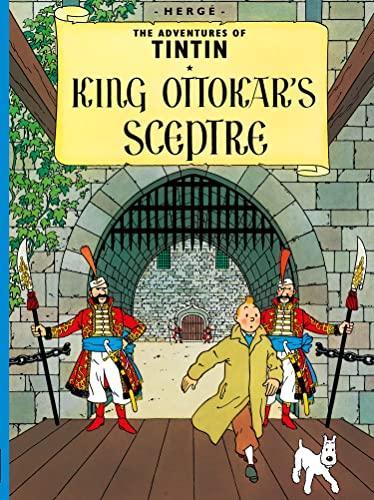Paperback, 62 pages
English language
Published March 8, 2003

Paperback, 62 pages
English language
Published March 8, 2003
King Ottokar's Sceptre (French: Le Sceptre d'Ottokar) is the eighth volume of The Adventures of Tintin, the comics series by Belgian cartoonist Hergé. Commissioned by the conservative Belgian newspaper Le Vingtième Siècle for its children's supplement Le Petit Vingtième, it was serialised weekly from August 1938 to August 1939. Hergé intended the story as a satirical criticism of the expansionist policies of Nazi Germany, in particular the annexation of Austria in March 1938 (the Anschluss). The story tells of young Belgian reporter Tintin and his dog Snowy, who travel to the fictional Balkan nation of Syldavia, where they combat a plot to overthrow the monarchy of King Muskar XII. King Ottokar's Sceptre was a commercial success and was published in book form by Casterman shortly after its conclusion. Hergé continued The Adventures of Tintin with Land of Black Gold until Le Vingtième Siècle's forced closure in 1940, while the series …
King Ottokar's Sceptre (French: Le Sceptre d'Ottokar) is the eighth volume of The Adventures of Tintin, the comics series by Belgian cartoonist Hergé. Commissioned by the conservative Belgian newspaper Le Vingtième Siècle for its children's supplement Le Petit Vingtième, it was serialised weekly from August 1938 to August 1939. Hergé intended the story as a satirical criticism of the expansionist policies of Nazi Germany, in particular the annexation of Austria in March 1938 (the Anschluss). The story tells of young Belgian reporter Tintin and his dog Snowy, who travel to the fictional Balkan nation of Syldavia, where they combat a plot to overthrow the monarchy of King Muskar XII. King Ottokar's Sceptre was a commercial success and was published in book form by Casterman shortly after its conclusion. Hergé continued The Adventures of Tintin with Land of Black Gold until Le Vingtième Siècle's forced closure in 1940, while the series itself became a defining part of the Franco-Belgian comics tradition. In 1947, Hergé coloured and redrew King Ottokar's Sceptre in his distinctive ligne-claire style with the aid of Edgar P. Jacobs for Casterman's republication. The story introduces the recurring character Bianca Castafiore, and introduced the fictional countries of Syldavia and Borduria, both of which reappear in later stories. The first volume of the series to be translated into English, King Ottokar's Sceptre was adapted for both the 1956 Belvision Studios animation Hergé's Adventures of Tintin and for the 1991 Ellipse/Nelvana animated series The Adventures of Tintin.